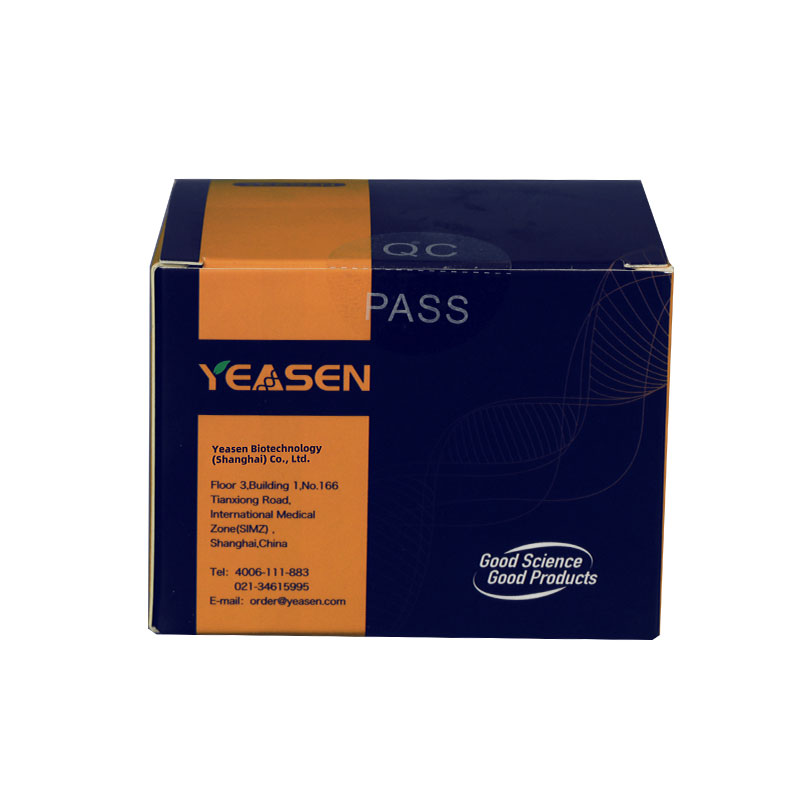Annexin V- YSFluorTM 488/PI Apoptosis Detection Kit
Product Information
|
Product name |
Cat# |
Specification |
|
Annexin V- YSFluorTM 488/PI Apoptosis Detection Kit
|
40305ES20 |
20 T |
|
|
40305ES50 |
50 T |
|
|
40305ES60 |
100 T |
Product description
The Annexin V-YSFluorTM 488/PI Apoptosis Detection Kit used YSFluorTM 488-labeled Annexin V as a probe to detect early Apoptosis, which could be detected by flow cytometry or other fluorescence Detection devices.
The detection principle is as follows: in normal living cells, phosphotidylserine (PS) is located in the inner side of the cell membrane, but in early apoptotic cells, PS flips from the inner side of the cell membrane to the surface of the cell membrane, and is exposed to the extracellular environment. Annexin-V is a Ca2+ -dependent phospholipid-binding protein with molecular weight of 35 to 36KD, which binds with high affinity to PS and binds to the cell membrane of early apoptotic cells through phosphatidylserine exposed on the outside of the cell.
In addition, Propidium Iodide (PI) is provided to distinguish surviving early cells from necrotic or late apoptotic cells. PI is a nucleic acid dye, which can not pass through the intact cell membrane of normal cells or early apoptotic cells, but can pass through the cell membrane of late apoptotic and necrotic cells and make the nucleus red. Thus, when Annexin V was combined with PI, PI was excluded from living cells (Annexin V-/PI-) and early apoptotic cells (Annexin V+/PI-). In contrast, late apoptotic and necrotic cells were double positive for YSFluorTM 488 and PI (Annexin V+/PI+).
Components
|
Component |
|
40305ES20(20T) |
40305ES50(50T) |
40305ES60(100T) |
|
40305-A |
Annexin V-YSFluorTM 488 |
100 μL |
250 μL |
500 μL |
|
40305-B |
PI Staining Solution (20 μg/mL) |
200 μL |
500 μL |
1.0 mL |
|
40305-C |
4×Binding Buffer |
10 mL |
25 mL |
50 mL |
Storage
The components are shipped with ice pack and can be stored at -20°C for 1 year.
Cautions
- Since apoptosis is a rapid process, it is recommended that samples be analyzed within 1 hour after staining.
- For adherent cells, digestion is a critical step. Do not use EDTA in the digestive solution as EDTA can affect the binding of Annexin V to PS.
- If the sample is from blood, be sure to remove platelets from the blood. Because platelets contain PS, which can bind to Annexin V, interfering with the results. A buffering agent containing EDTA can be used and the platelets washed away by centrifugation at 200 g.
- Please centrifuge the reagent briefly before opening the cover, and throw the liquid on the inner wall of the cover to the bottom of the tube to avoid liquid sprinkling when opening the cover.
- Annexin V-YSFluorTM 488 and PI are photosensitive substances and should be kept away from light when handling.
- For research use only!
Instructions
-
- Sample dyeing
- a) suspension cell: Cells were collected by centrifugation at 300 g for 5 min at 4 ° C.
b) adherent cell: After digestion with trypsin without EDTA, cells were harvested by centrifugation at 300 g for 5 min at 4 ° C. Trypsin digestion time should not be too long to prevent false positives.
2. The cells were washed twice with PBS precooled at 4 ° C, each time using 300g, and centrifuged at 4 ° C for 5 min.
3. Cells were resuspended by adding 250 μL 1×Binding Buffer, and the concentration was adjusted to 1×106/mL.
4. 100 μL of cell suspension was added into a 5mL flow cytometry tube, 5μL Annexin V-YSFluorTM 488 and 10 μL PI were added, and gently mixed.
5. The reaction was kept away from light and kept at room temperature for 15 min.
6. 400 μL of 1×Binding Buffer was added, mixed, and the samples were detected by flow cytometry within 1 hour.
【Notes】:To avoid cell loss during cell washing, a small Tip can be used to aspirate fluid.
-
- Flow cytometry analysis
YSFluorTM 488 has a maximum excitation wavelength of 488 nm and a maximum emission wavelength of 519 nm;The maximum excitation wavelength of PI-DNA complex was 535 nm, and the maximum emission wavelength was 615 nm. CellQuest and other software were used to analyze and draw two-color dot plot with YSFluorTM 488 as abscissa and PI as ordinate. Collect 10,000 events per sample.
-
- Fluorescence microscopy analysis
- Drop a drop of the cell suspension double-stained with Annexin V-FITC/PI onto the slide and cover the cells with a cover slip.
- It was observed under a fluorescence microscope with a two-color filter. Annexin V-FITC fluorescence signal was green, and PI fluorescence signal was red.
Catalog No.:*
Name*
phone Number:*
Lot:*
Email*
Country:*
Company/Institute:*

